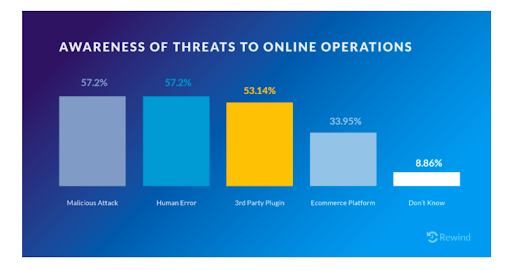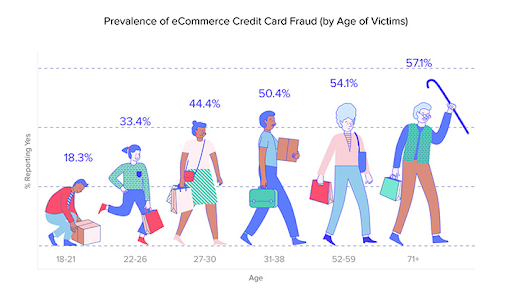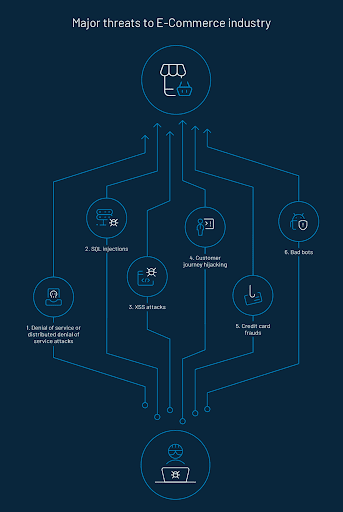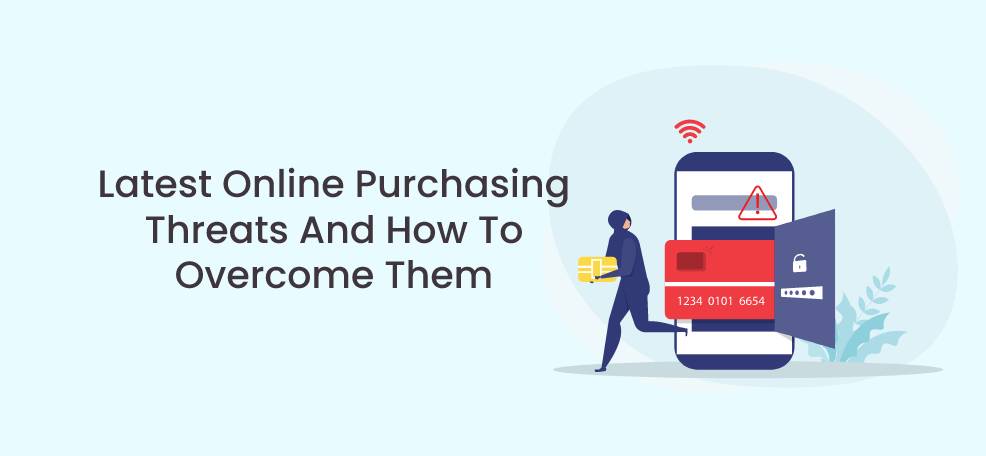The eCommerce industry is flourishing now more than ever. Since the pandemic, the rise in the online shopping realm has attracted entrepreneurs and customers alike.
Reports found that retail e-commerce sales raised 27.6% annually, equaling 4.280 trillion (2020) dollars in growth. E-commerce sales are becoming the core business model and a viable alternative for companies seeing a waning in brick-and-mortar purchasers.
Unfortunately, not everyone has sought advantage of the digital shopping model. Cybercriminals and fraudsters have also refined their techniques to carry out deceitful practices.
In fact, research shows that the value of losses, courtesy of eCommerce fraud, has increased in 2021, going from $17.5 billion in 2020 to more than $20 billion in the last year.
Considering this, entrepreneurs and marketing agents must take comprehensive measures to avoid risks and safeguard their eCommerce business.
These threats include fraud, unlawful sharing of data, malware, security breaches, and other vulnerabilities linked to working with third-party mediums, online security regulations, customer service issues, and data privacy laws.

Online Purchasing Risks
The threats associated with running an eCommerce business are quite distinct from operating a brick-and-mortar store. In the latter, businesses must integrate layers of security into their website to ensure that their customer and store data remains protected.
Any downtime is costly and disastrous for an online store, especially in your peak hours or season. Today, online shoppers quickly turn to a competitor if they don’t feel a virtual store is safe or offers a poor customer experience (CX).
As an eCommerce vendor, you have much to safeguard, but knowing the threats can make it easier to shore up the fortifications. Additionally, a reliable backup resolution is essential.

Though online backups may not protect you from all possible risks, they will give you peace of mind in helping you get back up in the unfortunate case of a cyberattack.
Here are some potential threats that can hinder the experience when purchasing online.
Online Security And Data Privacy Risks
Cybersecurity is one of the most significant concerns for businesses operating online. From DDoS attacks and credit card frauds to malware transmission, online stores need to heighten their security to ensure a safe user experience.
A DDoS attack takes place when your store’s website is engulfed by threats from thousands of untraceable IP addresses. These tracks are often caused by manipulating IoT devices and can result in grave damages, such as leaving you with an offline website or paving the way for advanced malware attacks.
DDoS attacks are especially harmful due to the reputational losses that ensue. Survey results show that 78% of security professionals believe that firms encountering DDoS attacks lose the customers’ trust and confidence.
Similarly, credit and debit card fraud is another key threat that eCommerce businesses face. As stores process, hundreds of transactions per day, identifying fraudulent transactions becomes an after-thought. As a result, store owners can drive up costs for paying credit card bills, reducing their marketing, promotions, and inventory budget.

eCommerce stores must also protect themselves from malware attacks. Malware is a software component exclusively engineered to harm a computer network. The malicious program is integrated into web pages through various techniques, such as SQL injections.
Malware enables cybercriminals to assume the store’s identity, control computers, and networks, send malicious emails on the store’s behalf, gain complete access to confidential data, and interfere with the database.
Considering these threats, storeowners must implement advanced cybersecurity measures, such as antivirus installation, extensive Ptaas to make sure their digital store remains protected against all forms of online security and data privacy risks.
Unauthorized Access
Unauthorized access is another great concern for individuals operating an eCommerce business. An unwarranted exposure of confidential customer and store data can jeopardize the store’s reputation and drive customers away from the competition. Moreover, some businesses may also pay penalties for exposing private customer data.
Therefore, your eCommerce store must take measures to remain protected from confidentiality breaches. You can do this by adding strict login protocols for employees, such as a multi-factor authentication system.
You can also safeguard your business from external threats by leveraging cybersecurity tactics like antivirus, firewall, encryption, and other data protection approaches.
Bad CSV Files
A Comma Separated Values file, or CSV file, is a text-based file that comprises tabular data and spreadsheets. One of the greatest benefits of creating CSV files is that they quickly store large chunks of data. The files can be easily altered, imported, and exported to other platforms.
However, these files must include specific content categories, and the data content must be stored as textual data. Textual data is systematically collected material mostly transcribed or written from speech. The primary reason for using textual data is that it allows you to store complex data as simple and readable.
You can store different data by making specific content categories, such as:
- Products’ information
- Customers’ information
- Product prices
- Website cookies and confidential data
- Product inventory
- Order information, tracking, and management
- Discount information
If any content categories are missing from the files, you will encounter an error message. This error can take a large duration of time to resolve and can result in major disruptions, thus affecting your sales. Therefore, your store should have a backup and recovery solution installed to help you return to the pre-error state until the major cause is discovered.
Human Error
Human error is still one of the most common threats affecting eCommerce stores. Slight negligence of a team member can result in the loss of a critical file or folder, thereby affecting your entire operational model.
Considering this, you need to deploy a backup and recovery solution to quickly restore and recover all files after you or your employee makes a mistake. These solutions must be specifically created to reduce downtime and resume your business operations as swiftly as possible.
Non-Compliance
If you’re operating an eCommerce business, you have to abide by the regulations and restrictions extended by the region you are selling in.
Relevant authorities have set certain regulations to protect data privacy for customers. For eCommerce stores, the most common guidelines include HIPAA, GDPR, PCI, and other regional and international data privacy laws.
The failure to comply with these regulations results in severe and heavy penalties, which can cause a grave financial setback for eCommerce businesses.
Therefore, business owners need to take the time to identify all the regional and international regulations that apply to their online stores. You must also update your website and online pages to comply with these regulations and only partner up with vendors who do the same.
Additionally, if you are using third-party SaaS, make sure it is compliant with the international data privacy and security regulations as well.
Exploitation Of Vulnerabilities
If your network remains unprotected, malicious actors can harm your system by exploiting vulnerabilities. To avoid this, you must update your software programs and SaaS applications. You must also remove and uninstall incompatible themes and plug-ins and add firewalls and anti-virus software programs.

Incompatible Plug-ins Or Software
The maintenance processes of an eCommerce store are streamlined with plug-ins and third-party SaaS. However, all third-party applications are not completely reliable or compatible with the platform, theme, or applications you are leveraging.
Often, using an incompatible plug-in can add vulnerabilities to your eCommerce store.
This is why it is essential to use software plug-ins and add-ons provided by reputable vendors only.
You can conduct comprehensive research and examine reviews before choosing the right plug-ins to deploy. Additionally, you must also update and audit the tool regularly to certify error-free usage.
Platform Downtime
Regardless of the platform, you are using to run your eCommerce store, you will be required to schedule downtime to update servers’ security and carry out code maintenance services. Unfortunately, a longer downtime can impact your sales and even damage the store’s reputation.
However, you can avoid a lengthy downtime by selecting a reliable platform. Thoroughly go through reviews and study forums to compare your options. Essentially, it is best to choose a positive reputation and a high uptime platform.
In addition to carefully selecting a platform, you must also strategically study and choose the right third-party and SaaS applications. This can help you improve site functionality and optimize your operations.
Loss Of Location Due To Crisis
An unforeseen setback can cause severe damage to your business. Your business can suffer grave losses from natural disasters, fire, flooding, and electrical grid failures without a backup plan. If you are running an eCommerce store, you need to have a defense system in place to deal with unpredictable issues.
Essentially, you can craft and implement a disaster recovery plan to solve every unfortunate scenario. You can highlight the specific problems your eCommerce business can encounter and create an appropriate plan of action to tackle each issue.
This plan should be formed around your business model and must be updated routinely.
For instance, a detailed cloud backup and recovery system can ensure that your store’s critical data remains protected at all costs.
Poor Customer Experience (CX)
Most eCommerce stores neglect customer experience when creating a design for the store’s appearance. For instance, software plug-ins and add-ons can make your online store aesthetically pleasing and easier to operate at the back-end. Still, it can also impact your site’s loading speed, thus harming the customer experience.
Additionally, you can also negatively influence the customer experience by designing a website that is difficult to navigate or comprehend.
Therefore, it is essential to create a simple but attractive design, add navigational features, and feature easy-to-understand, engaging, and informative content to help your customers find the answers they are seeking.

Wrapping Up
Merely about 3% of eCommerce site visits converted into actual purchases in 2019.
Difficulties in acquiring customers and low conversion rates are the tip of the iceberg. Managing an online business brings its set of issues and challenges that can impact its bottom line, leading to a decline in brand reputation.
Therefore, it’s a clever tactic to be aware of the risks beforehand to prepare yourself and mitigate them in your direct online setting to boost your eCommerce sales.
Besides financial consequences, security threats can hinder the overall customer experience. With the appropriate tools and techniques in place, you can successfully alleviate threats and overcome them.
Moreover, it is vital to team up and figure out workarounds to overcome security threats to achieve your business goals.
All in all, awareness is the key to ensuring a safe shopping experience for online customers. Also, take additional measures in these times to prevent reputational damage, customer abandonment, and financial loss.




